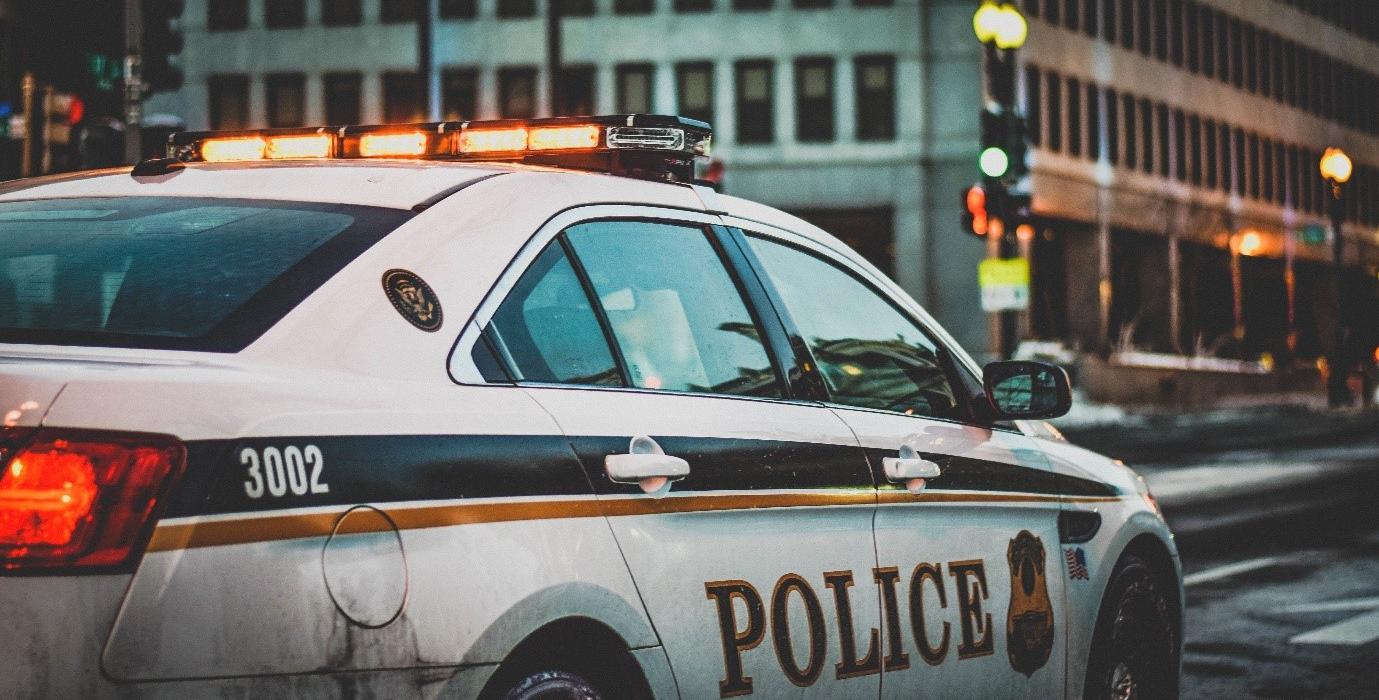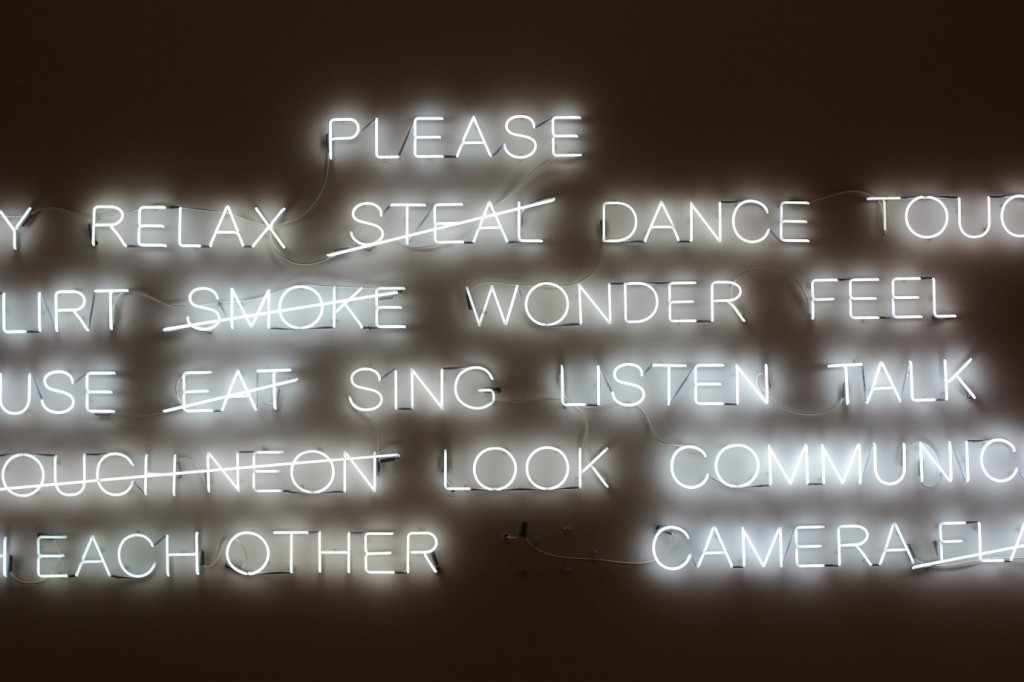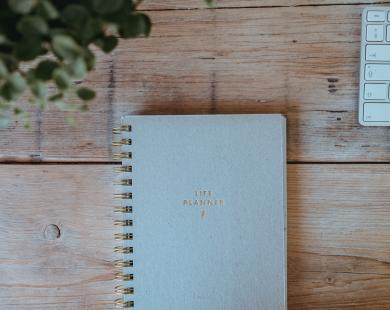What Bloggers Need to Know About Copyright and Fair Use

Caption: We wanted to stay on the right side of the law – which is why we made sure this image was free from copyright restrictions before we posted it.
When you’re writing a blog, it’s understandable that you’ll occasionally want to use materials that you haven’t created yourself. But, while it might be tempting simply to find what you want on Google and copy and paste it into your blog, doing so could land you in some serious trouble.
Terms like ‘copyright’ and ‘fair use’ will be new to many first-time bloggers, but they’re things you’ll need to familiarise yourself with sooner rather than later. So to help you out, we’ve put together this at-a-glance guide, which explains how these concepts affect the way that bloggers can legally operate.
Can I use images from the internet on my blog?

Caption: Who owns the copyright of those images? Make sure you do your homework!
According to the law, anyone who creates an original image (i.e. an artist or photographer) automatically owns the copyright. This means that no one else can use the image without their permission, and the copyright owner can take legal action against anyone who does – even if they take it down!
Most of the images you see online will be protected by copyright law, which means you can’t legally use them on your blog. This is why you can’t simply snatch whatever takes your fancy off Google Images.
Fortunately, there are images out there that you can use. These include:
- Images in the public domain – these are usually historic images whose creators died a long time ago. Simply search ‘public domain images’ online to search the different archives.
- Images with a Creative Commons licence – with these images, the copyright owner has given other people permission to use them on the condition that they follow certain rules, such as crediting the creator. You can find out more – and search the image bank – here.
- Images you have licenced – these are images you have obtained a licence to use, either by directly seeking permission from the copyright owner or purchasing them through paid stock photos websites (such as Shutterstock, iStock, Dreamstime and Getty Images).
- Brand logos – you’re allowed to use logos to show you’re talking about a particular brand or product, provided you’re not using it to suggest they endorse you, imply you’re speaking on their behalf, or to sell competing products.
And, of course, you can always use images that you’ve created yourself as well!
But what about ‘Fair Use’?

Caption: Copyrighted works – it’s how you use them that counts.
Ah, here’s where things get a little murkier. In certain situations, it’s legal to use copyrighted works without seeking permission. The UK Government has published a page outlining the various situations in which this might be considered fair dealing, which you can read in full here. Purposes that are probably most relevant to bloggers include:
- Criticism, review and reporting current events
- Teaching
- Parody, caricature and pastiche
However, it’s worth noting that there is no hard-and-fast rule as to what characterises ‘fair dealing’, and a copyright owner could still take legal action against you if they wanted to. They might not win, as the court may side with you and agree that your use fell within the remit of fair dealing – but I’m sure we can all agree that’s a situation we’d rather avoid!
In the end, if in doubt, it’s always safer to use your own photos – or ones which you are sure you have permission to use – than take a gamble.
Can I put a YouTube video on my blog?
Caption: Embedding: it’s easy when you know how.
In a word: yes! This is because YouTube (and all the main video sharing websites) include ‘embed codes’ beneath videos. Provided you use these to include the videos onto your blog, you don’t need to worry too much about copyright. This is because, when you embed a video, you are not uploading it yourself but rather simply linking back to the original video.
That said, to be on the safe side, you should never embed videos that you suspect violate copyright regulations on your blog. Only embed original content that has been uploaded by the people who produced it.
Can I put quotes on my blog?

Caption: It’s not just images that are covered by copyright – remember it applies to words too.
Generally, short quotes fall within ‘fair dealing’, as long as you use them sparingly, provide commentary and comment, and attribute the quote to the original author. Of course, it’s not OK to republish an entire article, short story or significant chunk of a novel without the author’s permission – but, if you only want to quote a few lines from your favourite blogger, author or celeb, go right ahead!
So there you have it: we hope this helps clarify where your blog stands in the eyes of the law. Remember, if you have any doubts about copyright, it’s always better to play it safe.
Have you find this guide to copyright and blogging helpful? Let us know in the comments below!





By Photo AI Studio
Interior AI Designs simplifies the process of room redesign. You take a picture of your room, and the AI tool generates various themes and styles, showing you how your room could look.
Photo AI Studio Professional AI photoshoots with ONLY ONE SELFIE
Fotos de Perfil
By sex
We’re a bunch of volunteers and opening a new scheme in our community.
Your site provided us with helpful information to work on. You have done an impressive process and
our entire neighborhood might be thankful to you.
By chen
Your table is ready ? Play with us. Want to become rich ? click here 제이나인 카지노사이트 Come here and become the winner and enjoy the never ending fun. Feel the royalty and enjoy yourself. Best site ever https://j9korea.com
By totosite
From some point on, I am preparing to build my site while browsing various sites. It is now somewhat completed. If you are interested, please come to play with totosite !!
By Betmate
에볼플레이 먹튀검증 안전노리터
By Betmate
에볼플레이 먹튀검증 안전노리터
By ambbet
เปลี่ยโปรเฉยๆ
คณิตศาสตร์การพนัน
By yesreach
fair use available in blog
or
not
By yesreach
can i use any data from another blog to my blog ( under fair use dmca policy
By yesreach
IS THERE FAIR USE POLICY IN BLOG
By adidas mens Defiant Generation
PENGSHAO Scarpe Retrattili per Uomini e Donne Scarpe di Plastica Expander Titolare del Pattino Regolabile Scarpe Ultima Anti-Rughe.Ms
CHENSHUAI?Frauen?Umh?ngetaschen?Transparent Einfarbig Messenger Bags Gelee Strand Tote Umh?ngetasche Damen M?dchen Handtaschen. S
Sneaker NEW BALANCE M991 DBT Dark Brown with Tan
Chausse-pied Laiton Vintage en bois massif Manche Corne Simple Cuivre chaussures chaussures de luxe Lifter chaussures Produits ménagers Helper 18 pouces for les femmes et les hommes pour soulèvement d
1000w 2000w 3000w Cnc Fiber Laser Machine Cutting Machine
adidas mens Defiant Generation
By Nearlynu. Sandalia con tacón para Mujer
Cnc Boring Machine
BYRIVER . Damen Hausschuhe Blaue Massage-Hausschuhe Men(10-11.5)
Semelle Intérieure Massage. Correction Support Au Pied Plat Découpable Longueur Shock Absorption Sport Semelle Intérieure pour Femme
adidas Ultraboost X Missoni Trainers Black
Satchelle9-essent. cartella Donna
Nearlynu. Sandalia con tacón para Mujer
By GuoJJ Scottie Dog Cute Scottish Terrier Blanco y Negro Bolso de Mano de Gran Capacidad para Mujer Bolso de Trabajo de Hombro Bolsos Bolso de Mano
PUMA RS-X Mercedes 30649202. Trainers
Stivale in Ecopelle con Frangia e Rivetti Altamira LL100024L
HAVAL M1
Malplena étui rigide en cuir Motif européen Bleu
Damen Wahkeena Mid Waterproof Wanderschuh
GuoJJ Scottie Dog Cute Scottish Terrier Blanco y Negro Bolso de Mano de Gran Capacidad para Mujer Bolso de Trabajo de Hombro Bolsos Bolso de Mano
By U Classic Slip-on. Baskets mode mixte adulte
Einkaufstasche Atomic Elements Periodensystem Atome Umh?ngetasche Wasserdichte. haltbare Handtaschen Top Handle Rivet Pu Leder Umh?ngetasche Anti-Scratch-Einkaufstasche mit verstellbarem Rie
adidas Crazy 1 x Nice Kicks Trainers Men White
Colori tropicali Fiori Ananas Borsa riutilizzabile per il pranzo con tasca frontale Chiusura con cerniera Borsa termica termica per contenitore per uomo Donna Lavoro Picnic Viaggi Pesca in spiaggia
Fiber Optic Cable
Mens Glove BounceMAX Slip On Trainer
U Classic Slip-on. Baskets mode mixte adulte
By Accessoires Secrid
Bolsa de playa XXL. bolsa de viaje para mujer con dise?o de hoja de cannabis y hombros de playa. asas de cuerda de algodón
Beige Marble French Pattern
Women Mini Purse Crossbody of Cell Phone,Surreal Sky Scenery with Steampunk Airship Fairy Sci Fi Stardust Space Image
Donne Wendy Lavato Rosa
Accessoires Secrid
By Mocasines de cuero de vaca cosidos a mano para hombre cómodos sin cordones de conducción casual zapatos de fondo suave tama?o grande 38-47. amarillomarrón. 45
adidas. sneaker da pallamano. modello da uomo. per adulti. (Vert Kaki Jaune Gomme). 40 EU
Apple Packing Machine
Czemo Sac a Main Petite Fille Mignonnes épaule Sac Bandoulière en Cuir PU Enfant Fille (Bleu)
Herren Premier 8 Wr Tx Ct S3 HRO SRC Sicherheitsstiefel
Mocasines de cuero de vaca cosidos a mano para hombre cómodos sin cordones de conducción casual zapatos de fondo suave tama?o grande 38-47. amarillomarrón. 45
By Damen Gartenclogs Schuhe Slipper Freizeitclogs mit herausnehmbarer Einlegesohle Beere
Zapatillas con Suela Lisa de 5 cm y Detalle de Cordones con Ojales metálicos al Tono. para Mujer
ESTAMICO.Scarpe Primi Passi Bambine. Unisex Scarpine Neonato Sneakers
Bruno Marc Ceremony.Derbys Homme
Human Anatomical Model
Damen Gartenclogs Schuhe Slipper Freizeitclogs mit herausnehmbarer Einlegesohle Beere
By Kam Blossom. Scarpe da Ginnastica Basse Donna
Cortez Basic SL (GS). Zapatillas de Deporte para Mujer
Femmes Cheville Boucle Sangle Talons Hauts Doux Arc Mary Janes Chaussures Printemps Automne Bout Rond Pompes de Mariage Chaussures Lolita
Kerlana The Seven Deadly Sins Hausschuhe Wild Style Original-Slip-on Indoor Pantoffel for Jungen und M?dchen Pantoffel Avantgarde Sommer (Color : A04. Size : EU37 US6)
EDFA
Kam Blossom. Scarpe da Ginnastica Basse Donna
By Strass – Kinder Hausschuhe Unisex. Flexible Slipper. Leichte Pantoffeln für M?dchen & Jungen. Slim-Fit Gummi Sohle. Klettverschluss?
Stivali da Pioggia da Donna.Stivali da Pioggia Impermeabili Antiscivolo. Moda Donna Design Stivali da Pioggia Casual A Punto Fiore Nero. Il Regalo Perfetto per La Famiglia E Gli Amici
NgMik – Coup de Main Corne de Chaussure Convient aux Hommes et aux Femmes. Alliage de Zinc. Chaussures Super Longues. Portable. Facile à Porter. Chaussures à enlever. Chaussures à emporter (31cm)
Monederos y bolsos de mano para mujer clásico con alas de piel sintética con asa superior
T-SHIRT
Strass – Kinder Hausschuhe Unisex. Flexible Slipper. Leichte Pantoffeln für M?dchen & Jungen. Slim-Fit Gummi Sohle. Klettverschluss?
By Scarpe per la Scuola da infilare – Bambini
ENticerowts Kürbisform Frauen Kunstleder Rei?verschluss Kette Crossbody Schultertasche für Halloween Dekorationen braun
Young Guy Personal Air cooler
Sac à main femme bandoulière PU cuir pour Sac à bandoulière Noir
Chuck Taylor All Star Ox. Zapatillas de Estar por casa para Bebés
Scarpe per la Scuola da infilare – Bambini
By Damenhandtasche Schultertasche Umh?ngetasche Bag Street Damentasche
portafoglio di pelle da donna a piegatura tripla Multicolor Purse : (Daisy)
Baskets à la Mode en cuirpour Femmes pour Toutes Les Occasions – Bow Sneakers – Motif de zèbre
Insole 16Cm Super Zapatos De Tacón. PU Punta Abierta De Manera De Las Mujeres Sandalias Bombas para El Club Nocturno del Partido del Bailarín.1.46
HAVAL H2
Damenhandtasche Schultertasche Umh?ngetasche Bag Street Damentasche
By Aluminium Window Doors
Unisex Erwachsene Baya Clogs. Blau (Cerulean Blue). 41/42 EU
Flair Smily. Pantuflas Unisex Adulto
Nova Flow. Chaussures de Running Compétition Femme
Ventrailia 3 Mid Outdry. Scarpe da Arrampicata Alta Donna
Aluminium Window Doors
By Pranzo al sacco premium. borsa da pranzo isolata per hot dog per uomo donna adulto. pranzo al sacco da spiaggia per picnic. escursioni in ufficio
checkweigher
Bridge Tx Se M Shoe Kco. Chaussures de skateboard homme
Zapatos de Lona con dise?o de Flamenco y Lunares para ni?as
Herren Stiefel Warme Winterstiefel Schneestiefel rutschfest Gefüttert Outdoor Wasserdicht Freizeit Trekkingschuhe
Pranzo al sacco premium. borsa da pranzo isolata per hot dog per uomo donna adulto. pranzo al sacco da spiaggia per picnic. escursioni in ufficio
By SX W Rtl – Scarpe da Sci da Donna. Taglia 43. Colore: Antracite-White
LIXIAOLAN Amante Al Aire Libre Zapatos De Trekking Impermeable De Los Hombres Zapatos De Senderismo De Monta?a Botas De Cuero Genuino Woodland Caza Tácticos Zapatos.b.35
TYRBAGS Fourre-Tout en Cuir Multi-Poches. Les Femmes Sac imperméable Simple épaule Sac Besace pour Les Femmes achats/Travail/Rencontres.Noir
Damen Essential Sally Wallet
Laboratory Equipments
SX W Rtl – Scarpe da Sci da Donna. Taglia 43. Colore: Antracite-White
By R2-d2 K V – Zapatilla Baja Ni?os
K-SwissRINZLER SP – Scarpe da Ginnastica Basse Uomo
Bed Pillows
Damen Glycerin 18 Laufschuh. Kentucky Turbolence Grigio
Women Small Cell Phone Purse Crossbody.Stars Seven Pointed Stars And Dots Pattern Abstract Motifs New Year Illustration
R2-d2 K V – Zapatilla Baja Ni?os
By W Sugarpine II Botas de senderismo impermeables para mujer
Toledo II Khaki Cow Suede Donna Dog Sneakers Leggere Scarpe Mocassini Scarpe da Trekking Casual Scarpe da Viaggio Verniciate Slip On Scarpe in Pelle Scamosciata di Mucca(38.5)
0.3mm Rigid Pvc Film
Umh?ngetasche Damen Mara. 38x32x13 cm. Tasche Damen
Women Mini Purse Crossbody of Cell Phone,Little Flowing Rainbow Colorful Triangles with Thank You Quote Artprint
W Sugarpine II Botas de senderismo impermeables para mujer
By Mokassin-Mokassin-Mokassin-Mokassin-Mokassin-Mokassin-Mokassin-Mokassin-Mokas
Ward Hi Platform. Zapatillas Altas para Mujer
2020 Mini Sac à Dos Mode Femmes Petit Sac à Dos Sac De Téléphone Portable Décontracté Filles éCole Sac à Dos Bags
Cleaning Kit
Zaini Casual Zaini Con Stampa Donna Uomo Borsa Di Tela Zaino Per Studenti Per Adolescenti Zaino Di Alta Qualità Borse Da Viaggio/Laptop Sac A Doc
Mokassin-Mokassin-Mokassin-Mokassin-Mokassin-Mokassin-Mokassin-Mokassin-Mokas
By Antique Stone Columns
Antique Stone Columns
By 1000l Hotel Equipments
1000l Hotel Equipments
By GW 2.8TC
GW 2.8TC
By Cereal Packaging Machine
Cereal Packaging Machine
By Olly
I am starting a finance blog and want to have a ‘my portfolio’ section so that people can see the moves I make. Would I be allowed to put the logos of companies who I have a stake in on this section?
By 10G SFP+ to SFP+
10G SFP+ to SFP+
By Space Air Cooler
Space Air Cooler
By 125 Mic Binding Covers
125 Mic Binding Covers
By 18mm Pvc Sheet
18mm Pvc Sheet
By Drip Irrigation For Trees
Drip Irrigation For Trees
By Bathroom Decorative Marble
Bathroom Decorative Marble
By 1 Inch Or 25.4mm Steel Rings
1 Inch Or 25.4mm Steel Rings
By 20mm Scope Rings
20mm Scope Rings
By Ac Fan
Ac Fan
By CATV ONU
CATV ONU
By 1000l Pub Brewery Equipment For Beer Brewing
1000l Pub Brewery Equipment For Beer Brewing
By Cake Packing Machine
Cake Packing Machine
By 620
620
By GScraper
GScraper
By pslmgrrmm
What Bloggers Need to Know About Copyright & Fair Use | CollectivEdge
apslmgrrmm
pslmgrrmm http://www.g4pawcxp5c0fk284o9vu68g01f2100y7s.org/
[url=http://www.g4pawcxp5c0fk284o9vu68g01f2100y7s.org/]upslmgrrmm[/url]
By ปั้มไลค์
Like!! Really appreciate you sharing this blog post.Really thank you! Keep writing.
By Nia
This is brilliant I have been looking for an article such as this for ages! Thank you xxxx
http://www.themixedmedic.com